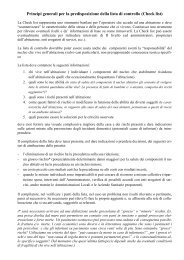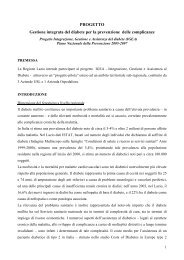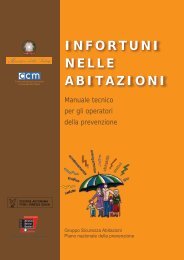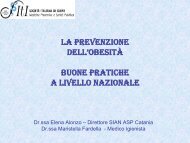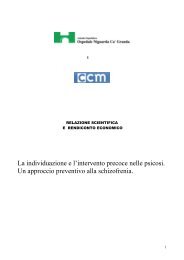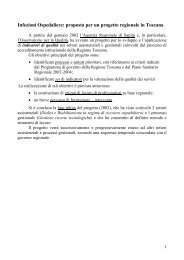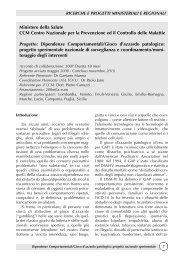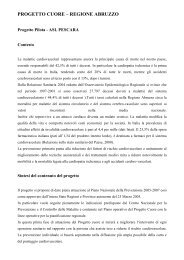Gaining health : analysis of policy development in European ...
Gaining health : analysis of policy development in European ...
Gaining health : analysis of policy development in European ...
You also want an ePaper? Increase the reach of your titles
YUMPU automatically turns print PDFs into web optimized ePapers that Google loves.
Lithuania<br />
Anna Ritsatakis<br />
1. Country pr<strong>of</strong>ile<br />
Lithuania is situated on the eastern Baltic coast. It is<br />
bordered by Belarus to the east, Latvia to the north and<br />
Poland to the south. In March 1990, Lithuania declared its<br />
<strong>in</strong>dependence from the USSR.<br />
Lithuania is divided <strong>in</strong>to 10 regions and 56 municipalities.<br />
There are 56 local self-govern<strong>in</strong>g councils elected every<br />
two years, and 10 district advisory councils compris<strong>in</strong>g the<br />
mayors <strong>of</strong> the local councils. In 2005, the population was 3.4<br />
million, about 67% <strong>of</strong> whom lived <strong>in</strong> urban areas.<br />
The national language is Lithuanian. Lithuania jo<strong>in</strong>ed the EU<br />
<strong>in</strong> May 2004.<br />
1.1. Socioeconomic <strong>development</strong><br />
At the beg<strong>in</strong>n<strong>in</strong>g <strong>of</strong> the 21st century Lithuania had an<br />
unemployment rate <strong>of</strong> over 12%, but by 2004 this had<br />
fallen to around 6%. Dur<strong>in</strong>g the same period, per capita<br />
gross national <strong>in</strong>come doubled from US$ 3170 <strong>in</strong> 2000 to<br />
US$ 7210 <strong>in</strong> 2005. Indeed, this period may be considered<br />
as one <strong>of</strong> solid economic growth, stable currency, <strong>health</strong>y<br />
public f<strong>in</strong>ances, low budget deficit and successful structural<br />
reforms.<br />
Despite these significant improvements, however, <strong>in</strong>equalities<br />
rema<strong>in</strong>. Although the proportion <strong>of</strong> those liv<strong>in</strong>g <strong>in</strong><br />
absolute poverty decreased considerably dur<strong>in</strong>g the 1990s,<br />
<strong>in</strong>come <strong>in</strong>equalities are greater <strong>in</strong> Lithuania than <strong>in</strong> EU15<br />
countries. Eurostat reports that, <strong>in</strong> 2002, 17% <strong>of</strong> Lithuanians<br />
had <strong>in</strong>comes below 60% <strong>of</strong> the national median disposable<br />
<strong>in</strong>come (after social transfers), compared to an average <strong>of</strong><br />
14% <strong>in</strong> the EU countries <strong>in</strong> 2001 (1).<br />
1.2. The people and their <strong>health</strong><br />
Between 1970 and 1990, the population <strong>of</strong> Lithuania <strong>in</strong>creased<br />
from 3.1 million to around 3.7 million. S<strong>in</strong>ce the political<br />
changes <strong>in</strong> eastern Europe, there has been a gradual<br />
but cont<strong>in</strong>uous decrease to around 3.4 million. Natural<br />
growth <strong>of</strong> the population has been negative s<strong>in</strong>ce 1994.<br />
World Bank forecasts (2) <strong>in</strong>dicate a cont<strong>in</strong>u<strong>in</strong>g decrease<br />
over the com<strong>in</strong>g years, reach<strong>in</strong>g 3.2 million by 2020.<br />
As the birth rate has cont<strong>in</strong>ued to fall (around 15 live births<br />
per 1000 population <strong>in</strong> 1980 to just below 9 <strong>in</strong> 2005) and<br />
young people seek jobs abroad, there has been a rapid<br />
age<strong>in</strong>g <strong>of</strong> the population. The proportion <strong>of</strong> people aged<br />
65 years and over rose from around 11% <strong>in</strong> 1980 to 15% <strong>in</strong><br />
2005, and this is estimated to reach 22% by 2030 (1).<br />
Overall life expectancy at birth <strong>in</strong>creased from 70.3 years<br />
<strong>in</strong> 1996 to 72.3 years <strong>in</strong> 2000, fall<strong>in</strong>g aga<strong>in</strong> to 71.3 years <strong>in</strong><br />
2005. This hides a large and <strong>in</strong>creas<strong>in</strong>g gender gap. In 2005,<br />
life expectancy for males was 65.4 years while that for<br />
females reached 77.4 years. Accord<strong>in</strong>g to WHO estimates<br />
(1), Lithuanians spend on average about 11.9% <strong>of</strong> their life<br />
with illness.<br />
The overall rates also hide considerable regional differences,<br />
there be<strong>in</strong>g a tw<strong>of</strong>old difference between the regions with<br />
the highest and lowest mortality rates. Life expectancy<br />
between these regions differs by almost seven years (3).<br />
The number <strong>of</strong> <strong>in</strong>fant deaths per 1000 live births has been<br />
gradually fall<strong>in</strong>g, reach<strong>in</strong>g 6.8 <strong>in</strong> 2005. This is still higher than<br />
<strong>in</strong> western <strong>European</strong> countries and its further reduction is<br />
one <strong>of</strong> the aims <strong>of</strong> the current <strong>health</strong> programme.<br />
More than half <strong>of</strong> all deaths <strong>in</strong> Lithuania are caused by CVD.<br />
They are also the cause <strong>of</strong> 30% <strong>of</strong> disabilities and 15–20%<br />
<strong>of</strong> all referrals for <strong>health</strong> care. With<strong>in</strong> total cardiovascular<br />
mortality, ischaemic heart disease and stroke constitute<br />
the greatest proportions. Although mortality from CVD<br />
Chapter 4<br />
189<br />
Case studies: <strong>policy</strong> <strong>development</strong> <strong>in</strong> countries for tackl<strong>in</strong>g noncommunicable diseases



